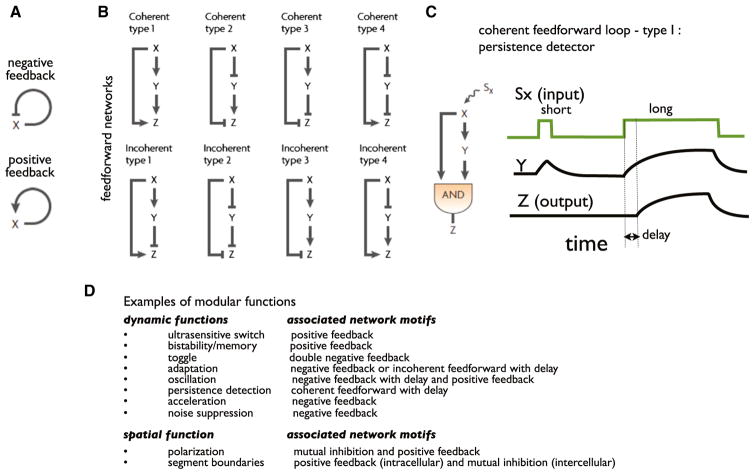Figure 2. Enriched Network Motifs.
(A) The most common motifs in the bacterial transcription factor network are positive and negative feedback loops.
(B) Feedforward loops (FFL) are a common three-node motif. The top and bottom nodes (X and Z) are linked by both a direct regulatory path and an indirect one (via node Y). There are eight major subclasses of FFLs, characterized by the signs of their regulatory links. Coherent FFLs have indirect and direct links with the same overall sign. Incoherent FFLs have indirect and direct links with the opposite overall signs.
(C) A type I coherent feedforward loop with an AND gate terminal node can show the behavior of a persistence detector—it will only respond to a longer pulse of input.
(D) Table showing examples of simple functional behaviors and network architectures that are often associated with them (reviewed in Alon, 2007; Sneppen et al., 2010; Tyson and Novák, 2010).

